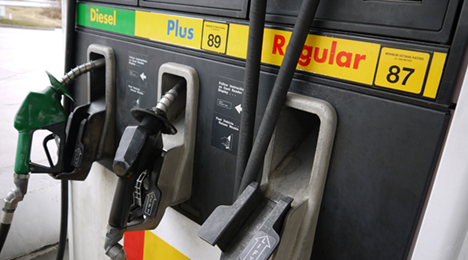Buyers Still Want Fuel-Efficiency Despite $2 Gas

Even though gas might cost about $2 a gallon in many parts of the country, potential buyers still might not be too keen on those fuel-thirsty rigs in your inventory.
The J.D. Power 2015 U.S. Avoider Study indicated that fuel-economy remains the most influential factor among the majority of new-vehicle buyers in determining which vehicle they select. Fuel-economy stayed as the leading factor for a fourth consecutive year despite gas prices falling to their lowest levels since 2010
The study, now in its 12th year, examines the reasons consumers purchase, reject or do not consider — or avoid — particular models when shopping for a new vehicle.
According to the study, 14 percent of new-vehicle owners cite gas mileage as the most influential reason for selecting the vehicle they ultimately purchased.
At the segment level, gas mileage is the primary purchase reason among buyers of compact, small and midsize cars and compact MPVs. Consequently, fuel economy is the second-most common reason why a model is rejected by shoppers at dealerships in favor of another model (16 percent).
“Consumers know that, although gas prices are low today, the cost of fuel will likely increase during the time they own their vehicle," said Arianne Walker, senior director of automotive media and marketing at J.D. Power.
“Clearly, consumers are considering the total cost of ownership when selecting their new vehicle,” Walker continued.
J.D. Power noted low gas prices are among the factors suppressing demand for hybrid/electric vehicle models. Firm analysts noted several developing trends, including:
— Hybrid/EVs currently account for only 3.5 percent of new-vehicle sales, down from 3.8 percent in 2013, with more than 70 hybrid/EV models vying for that small slice of the market, according to LMC Automotive.
— Buyers of traditional gasoline-engine vehicles avoid hybrid models due to cost at much higher rate (24 percent) than they avoid gasoline engines due to cost (16 percent).
— Gen Y consumers — born between 1977 and 1994 and a seemingly likely target market for hybrid vehicles because they are known to embrace eco-friendly practices — who buy gasoline engines avoid hybrid models at even greater rates for being too expensive (27 percent).
The U.S. government’s new Corporate Average Fuel Economy standards require automakers to obtain an average fuel efficiency of 54.5 miles per gallon across their new car and light truck fleet by 2025.
“Factors such as fuel prices and consumer demand may make these tough standards even harder to achieve, as you can't mandate what people want to buy,” Walker said.
“Gen Y, the largest demographic group in U.S. history, comprises approximately 26 percent of the market, and their demand for larger vehicles will increase as their income increases and their households grow, putting further pressure on the ability for automakers to meet the strict federal mandates on gas mileage,” Walker went on to say.
J.D. Power also mentioned two other key findings from its 2015 U.S. Avoider Study, including:
— Exterior look/design is the top reason shoppers avoid a particular vehicle (30 percent), followed by cost and interior look/design (17 percent each).
— Vehicle technology is becoming increasingly important among consumers, as new-vehicle buyers indicate they avoided a model because it lacked the latest technological features at a rate of 15 percent in 2015, up from 4 percent in 2014.
The 2015 Avoider Study is based on responses from nearly 30,000 owners who registered a new vehicle in April and May of last year. The study was fielded between July and September.

 View The Latest Edition
View The Latest Edition

